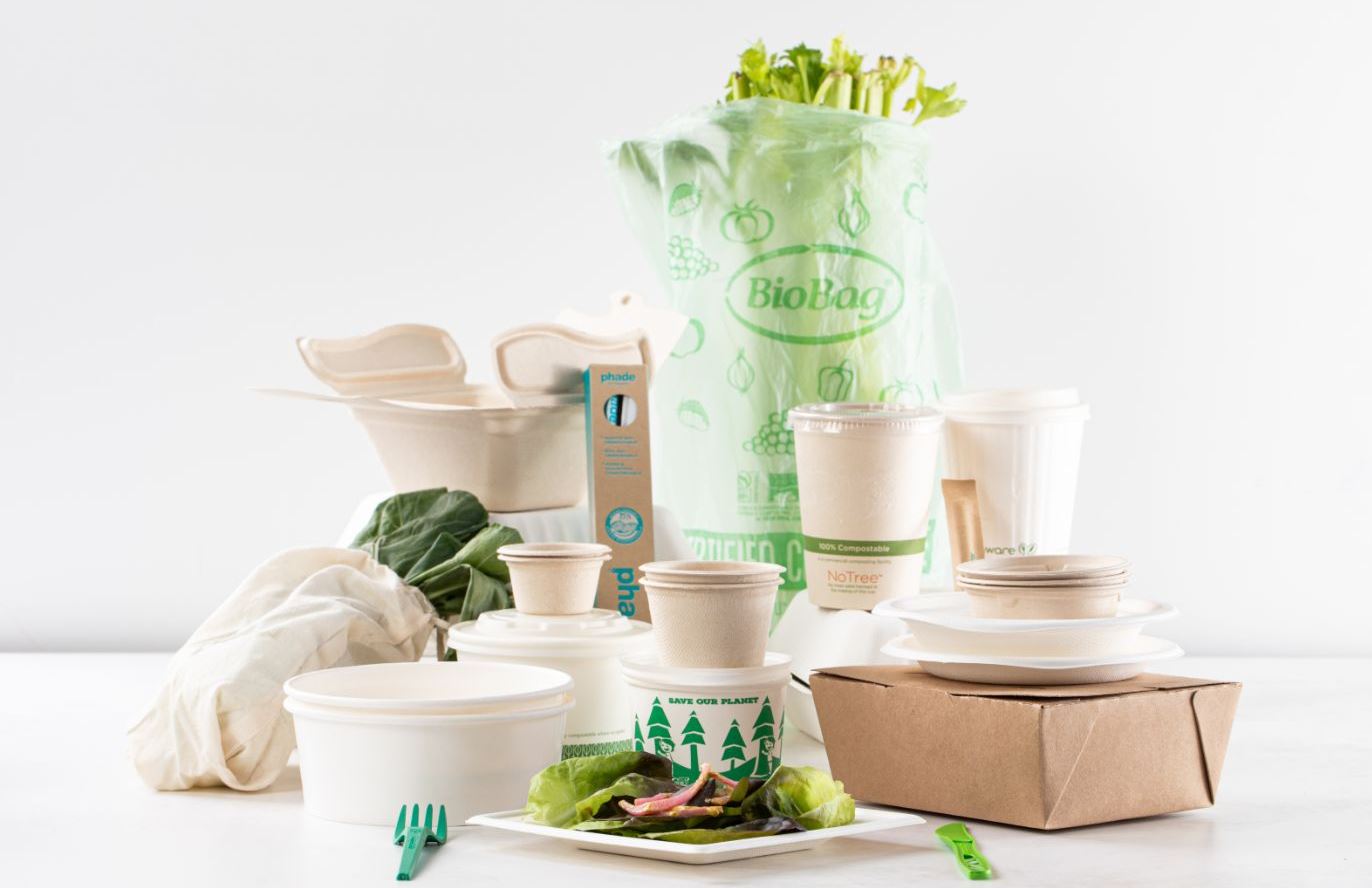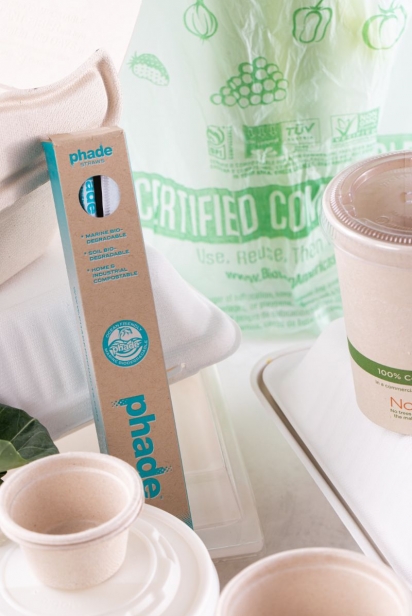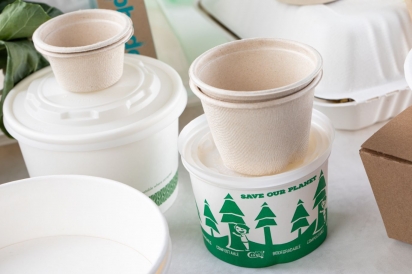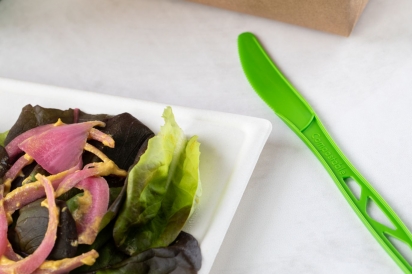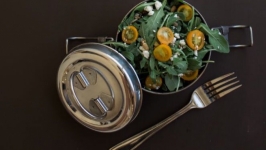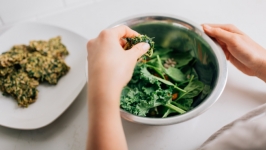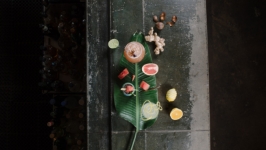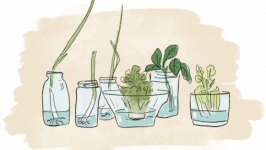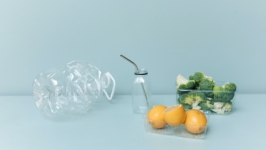Restaurant Takeout Packaging Goes Green
Are you ordering takeout or having food delivered from your favorite restaurants more frequently since the coronavirus pandemic began? If so, you’re not alone. A survey conducted by the National Restaurant Association (NRA) from October 31-November 1, 2020 found that 66% of adults ordered takeout or delivery for dinner the previous week. This was up from 58% during the last week of February. And according to the NRA, the trend is likely to continue: of the adults who ordered takeout or delivery that week, 32% said they expect to increase their frequency during the next three months.
This is good news for local restaurants. What may not be so good is the type of packaging in which your food is served, and how it could impact not only the environment, but also our long-term health. For example, is it single-use styrofoam or plastic, or something more sustainable, like paper, bagasse (plant fiber derived from sugarcane or sorghum) or PLA (also known as bioplastic)? While there are not yet any hard figures on the amount of additional waste being generated by the pandemic, there are plenty of anecdotal ones – and reasons for concern.
“Before the pandemic, we were all very comfortable eating from reusable plates and bowls,” says local sustainability consultant Tara Dodson, founder of Full Circle Resource. “Businesses were making progress towards decreasing waste – and more especially, single-use plastics. However, in an effort to keep customers coming back for more, eateries reinvented themselves, resulting in an increase in disposable products and single-use printed menus. Retailers were even asking that we don't bring our reusable bags. The fallout from this increase is real and will need to be dealt with as we progress through the pandemic together. This not only impacts the businesses because they are purchasing more products, it places an additional burden on waste management.”
Christina Kelcourse, executive director of the North Florida Green Chamber of Commerce, agrees. “Even before the increased use in to-go packaging due to the pandemic, this issue was important,” she says. “So it simply becomes more important. Microplastics are being found in our water, rain, food; and inside animals, plants and even us. Plastic gloves, masks and to-go containers litter our neighborhoods and streets. I know a lot of people are concerned and these people are going to support restaurants that are making sustainable choices. We had a lot of businesses ready to switch, but when the pandemic hit they gave up the idea and kept with the products that they knew as a way to make life easier.”
Others presumably held off due to the added costs. However, some local restaurateurs have stuck with their sustainable packaging programs despite the pandemic and the challenges it has presented.
One of those food businesses is 1748 Bakehouse in Jacksonville's Springfield neighborhood. “The environment and the planet's health have long been important to us; they even have their own section in our team handbook,” shares co-owner and chef Kurt D'Aurizio. “We used very limited disposables prior to Covid, and once we shifted to a to-go service – and even after we opened the dining room back up – we knew we had to find the least environmentally impactful products we could source.”
Even though takeout volume has increased considerably, 90% of the eatery’s packaging is currently sustainable, and consists of a mix of paper, starch-based and previously recycled plastic products. “For us,” says D'Aurizio, “the more packaging we use, the more important that it has a lower environmental impact.” And although it’s pricier than single-use packaging, he notes that they “believe it is the right choice to make as a business and that many of our customers appreciate that.”
The Floridian Restaurant in St. Augustine also continues to use eco-friendly packaging, despite the fact that it costs more than the traditional kind. “We did indeed lose money by doing that through the worst of the pandemic, when we were offering solely carryout, as we dropped prices overall and couldn’t pass along the cost of the packaging to our customers,” explains chef and co-owner Genie McNally. “But we honestly didn’t feel like we could have done it any other way, especially given the volume that restaurants across the country were consuming throughout that time.”
McNally has been using this type of packaging for more than ten years, and says that currently, close to 100% of the eatery’s packaging is sustainable in some way. “Our mission as a restaurant has always included a very strong element of sustainability and eco-friendliness,” she says. “We could not justifiably do it any other way and stay true to our ethos at large.”
For restaurateurs thinking of switching over, McNally suggests starting small. “We have seen many of our friends, colleagues and fellow restaurateurs move in the right direction over the past few years,” she says. “Even starting small is a positive step, like switching to paper straws instead of plastic.” She also notes that while many of the products can be more expensive, they are not expensive to the point of being cost-prohibitive. As far as the additional costs go, Kelcourse points out, “you are buying quality or quantity. You can also make these costs up by marketing your smart choices to consumers who want to support companies making sustainable choices.”
For businesses looking to make the switch, the Green Chamber offers a buyers club catalogue, which features a vetted collection of nontoxic, plastic-free product alternatives and allows users to leverage volume to decrease costs. Kelcourse says that both recyclable and compostable products are great options, but to be cognizant of what’s actually getting recycled (especially if you use a mixed bin) as well as what composting options are available outside the home.
Dodson has also helped restaurants transition and recently launched Eco Collections Marketplace, an online shop designed to help businesses purchase environmentally-friendly products in bulk. “It is our duty to respect nature, the places we visit, our friends, families, and ourselves,” she says. “The hardest part is changing our habits. But if we can endure this past year with the grace we all have demonstrated towards each other we can also change the way we treat our planet.”
And indeed it’s a practice many customers notice - and appreciate. “Economics is supply and demand, and in the words of [punk band] Fugazi: 'Never mind what they're selling. It's what you're buying,'" says McNally. “Consumers have the power to demand positive change and can vote with their dollars spent. Supporting places doing ostensibly 'good' things goes a long way.”


